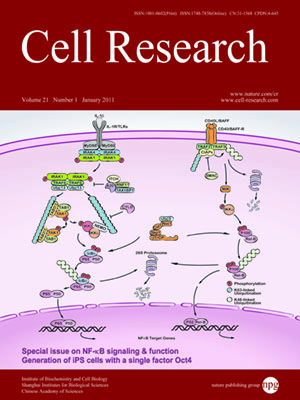
Volume 21, No 1, Jan 2011
ISSN: 1001-0602
EISSN: 1748-7838 2018
impact factor 17.848*
(Clarivate Analytics, 2019)
Volume 21 Issue 1, January 2011: 116-130
REVIEWS
Nuclear initiated NF-κB signaling: NEMO and ATM take center stage
Shigeki Miyamoto
Department of Pharmacology, University of Wisconsin-Madison, 6159 Wisconsin Institute for Medical Research, 1111 Highland Avenue, Madison, WI 53705, USA
Correspondence: Shigeki Miyamoto,(smiyamot@wisc.edu)
A large body of literature describes elaborate NF-κB signaling networks induced by inflammatory and immune signals. Decades of research has revealed that transcriptionally functional NF-κB dimers are activated by two major pathways, canonical and non-canonical. Both pathways involve the release of NF-κB dimers from inactive cytoplasmic complexes to cause their nuclear translocation to modulate gene expression programs and biological responses. NF-κB is also responsive to genotoxic agents; however, signal communication networks that are initiated in the nucleus following DNA damage induction are less defined. Evidence in the literature supports the presence of such signaling pathways induced by multiple distinct genotoxic agents, resulting in the activation of cytoplasmic IKK complex. An example is a pathway that involves the DNA damage-responsive kinase ataxia telangiectasia mutated (ATM) and a series of post-translational modifications of NF-κB essential modulator (NEMO) in the nucleus of a genotoxin-exposed cell. Recent evidence also suggests that this nuclear-initiated NF-κB signaling pathway plays significant physiological and pathological roles, particularly in lymphocyte development and human cancer progression. This review will summarize these new developments, while identifying significant unanswered questions and providing new hypotheses that may be addressed in future studies.
Cell Research (2011) 21:116-130. doi:10.1038/cr.2010.179; published online 28 December 2010
FULL TEXT | PDF
Browse 2179


